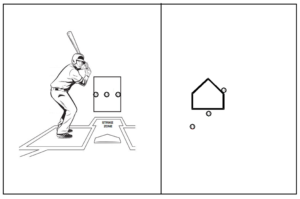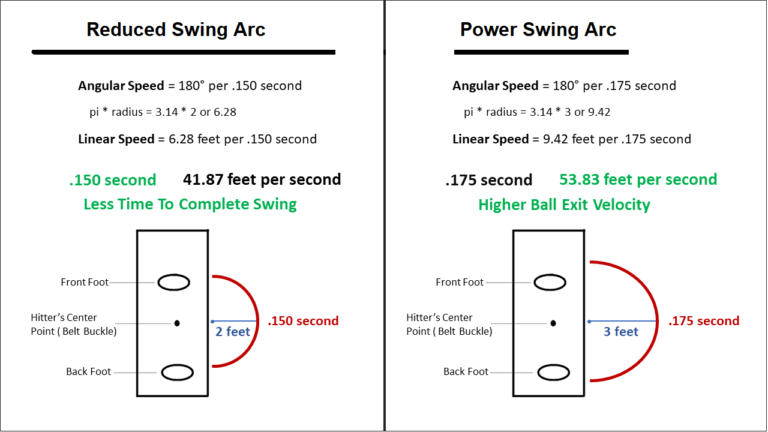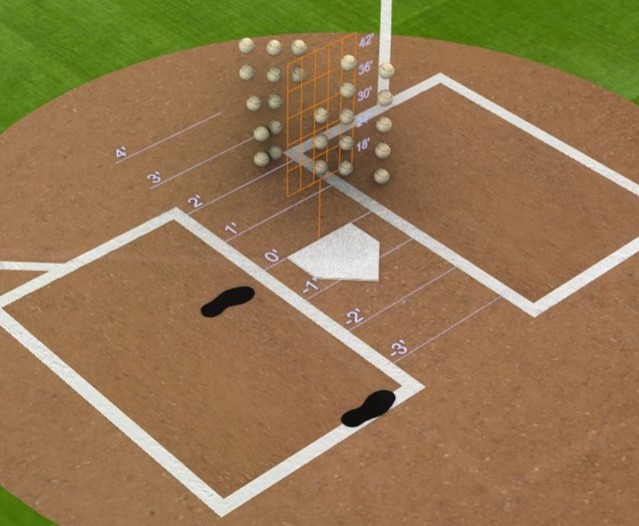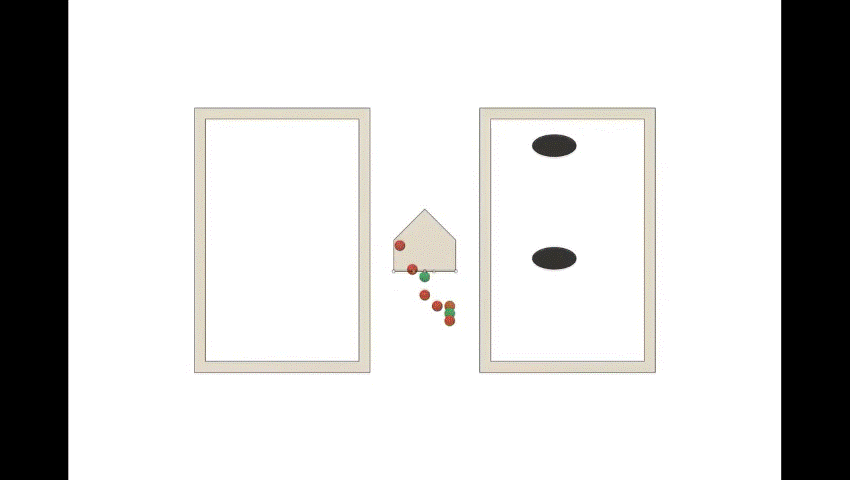
The Statcast Illusion: When Data Becomes Anecdote
By Ken Cherryhomes ©2025
Baseball’s latest analytical advancement, Statcast’s new contact-point data, promises to revolutionize how we evaluate hitters. Beginning on Opening Day of the 2025 MLB season, we’ll have access to precise measurements of where hitters make contact relative to home plate and their bodies. But how that data is interpreted is just as important as the data itself.
A recent MLB.com article attempted to analyze this new dataset through the lens of Shohei Ohtani’s deep-contact tendencies, arguing that his ability to hit the ball farther back in the zone is a key reason for his all-fields power.
This is where the analysis falls apart.
It takes accurate, objective measurements and turns them into anecdotal conclusions by assuming that deep contact itself is an all-fields power-generating trait. It confuses correlation with causation, not recognizing that Ohtani’s all-fields power isn’t the result of deeper contact at every pitch location, but of his elite bat speed, adjustability, and ability to produce power despite a reduced swing arc.
This is more than just a misread of one player. It is a reflection of baseball’s fundamental misunderstanding of hitting, where mechanical assumptions still take precedence over the real governing factor of success: swing decisions that match pitch location and precise timing.
Yes, when hitting to opposite fields, deep contact within the arc of the swing is a universal trait governed by physics. For any ball to be hit to the opposite field, the barrel of the bat must be facing in that direction at contact, which means contact will always occur deeper in the arc, closer to the batter and the start of their swing arc. This is not a matter of approach or mechanics but of simple spatial relationships dictated by the swing’s natural path.
All hitters make deeper contact when going the other way, Ohtani is no exception, and this does not explain Ohtani’s all-fields power.
What separates Ohtani is not just where he makes contact on outside pitches, but where he makes contact on middle pitches hit to centerfield.
Statcast data shows that the average MLB hitter makes contact 2.4 inches in front of home plate, while Ohtani makes contact 3.7 inches deeper. Relative to the body, the average MLB hitter makes contact 30.2 inches in front, whereas Ohtani’s average is 25.7 inches, nearly five inches deeper.
This tells us that Ohtani’s swing arc is more compact, with a more reduced circumference compared to other hitters. On middle pitches that he drives to centerfield, he makes contact significantly deeper than most hitters. Since contact depth dictates where the barrel is in the swing’s semi-circular path, this means his barrel is turning over sooner and completing its arc earlier. This confirms that his swing arc is shorter than that of a typical power hitter, who maximizes extension out front.

Here, the graphic reinforces the analytical point that Ohtani’s swing arc is reduced—and that this reduction enables earlier barrel turnover and deeper contact. It visually quantifies that idea. It’s a technical validation of the claim that a shorter arc allows less time to complete the swing.
This ability to make deep contact on middle and pull-side pitches and still generate elite exit velocity is remarkable, but it is not the reason Ohtani succeeds. He and Aaron Judge are exceptions to the rule dictated by the physics of force generation. Their sheer bat speed and strength allow them to compensate for the lost angular momentum and force that typically results from deeper contact. This is why they are not good models to follow.
Can a hitter have all-fields power without a reduced swing arc? Absolutely. A reduced arc buys milliseconds of extra time, but that time comes at a cost, reduced ability to generate maximum force through the bat path. And is that time gain significant? Not necessarily. All swings are governed by the quality of the decision made on when to swing, not just by the mechanics of how the bat moves.
And yet, despite a reduced arc, one that typically limits power, Ohtani still generates elite exit velocities. This tells us that his ability to compensate with raw bat speed and strength is an outlier, rather than evidence that deep contact itself is a power-producing trait.
The Physics of Contact and Power Generation
The Statcast data reveals interesting patterns:
- The average MLB hitter makes contact 2.4 inches in front of home plate.
- Ohtani makes contact 3.7 inches deeper than the league average.
- The average MLB hitter makes contact 30.2 inches in front of their body.
- Ohtani’s average is 25.7 inches—nearly five inches deeper than most hitters.
But interpreting these measurements requires understanding the physics of hitting. Deep contact itself is not a power-generating trait, it’s a byproduct of approach, swing arc, and pitch location.
Some of baseball’s best power hitters thrive by making contact at optimal points for force transfer. Ronald Acuña Jr. consistently meets the ball farther out front, maximizing his ability to accelerate through contact. Mookie Betts generates his power by fully extending into the ball rather than cutting off his swing with deeper contact.
Even Freddie Freeman’s deep-contact tendencies are simply a byproduct of his approach-heavy reliance on opposite-field hitting. He doesn’t hit for power because of deep contact, he hits for power despite it, much like Ohtani, but more location-sensitive due to their differences in physical strength.
These examples illustrate how different hitters apply unique strategies based on their strengths. Yet, Statcast’s approach treats contact depth as a static trait, aggregating swings across different pitch locations and approaches into a single average. But a pull-heavy hitter’s forward contact points and an opposite-field hitter’s deep contact points should not be treated as equivalent data.
Without segmenting swings into meaningful buckets, such as contact depth by pitch location and approach, comparisons between hitters become fundamentally flawed. Ohtani’s deep contact does not serve the same function as Freeman’s, and averaging these values together obscures the real story behind hitter tendencies.

This 3D contact points model visually represents this relationship, showing how different depths of contact influence spray angles. Misinterpreting contact depth data without factoring in swing arc and intent leads to misleading conclusions.
Not only does averaging swings obscure meaningful hitter tendencies, but the measurement process itself introduces inconsistencies. Contact depth relative to a hitter’s body fails to account for differences in stance width and posture, making comparisons between hitters even less reliable than they appear.
This flawed approach becomes even more apparent when looking at historical power hitters.
Mark McGwire’s primary power approach was based on meeting the ball farther out front, pulling pitches where his bat was fully extended and had reached peak acceleration. But he also let the ball travel when hitting to the opposite field. Ted Williams explicitly emphasized the importance of making contact out front, understanding that the longer a hitter lets the ball travel, the more they lose bat speed and the ability to apply force efficiently.
These hitters would have completely broken any attempt to define power tendencies through averaged contact depth because their ability to hit for power was not based on a singular model but on adjustments to maximize force based on pitch location.
If deep contact were the optimal model for power, hitters like Williams, Griffey Jr., and McGwire, who had some of the best offensive outputs in baseball history, would not have favored forward contact depth and broader swing arcs.
Baseball’s Fundamental Blind Spot: Timing vs. Mechanics
The MLB.com article makes the same mistake baseball has made for decades; it overemphasizes mechanics while underestimating timing.
What truly separates elite hitters isn’t their mechanics, it’s their ability to recognize pitch location, make fast decisions, and apply the correct timing strategy for maximum force transfer. Mechanics determine the possible range of contact points based on a hitter’s swing arc, but timing dictates where within that range the bat actually meets the ball.
Ohtani’s all-fields power comes from his elite recognition of pitch location, decision timing, and his physical strength. He doesn’t alter his mechanics significantly for different pitch locations, applying the same swing with precise adjustments to his contact depth and timing.

This visual contrasts a reduced swing arc with a full power arc. A shorter arc may shave off milliseconds, but it comes at the cost of bat path length—limiting peak bat speed and force transfer. Most power hitters extend their arc to maximize exit velocity. Ohtani is the exception, generating elite power with a compact arc—a rare feat made possible by his extraordinary bat speed and physical strength. But this isn’t necessarily a model others should emulate. The trade-off only works when paired with exceptional tools and elite pitch recognition.
His general approach favors a reduced arc, even on pull-side swings. Yet at times, he extends further out front to pull a pitch. These deviations expose a critical flaw in how contact depth is treated analytically. It isn’t a fixed mechanical trait—it’s a dynamic variable shaped by pitch location, intent, and recognition speed. Averaging contact points across all swings assumes mechanical consistency where none exists. It skews the data toward a false uniformity, masking the cognitive decisions that actually drive swing outcomes.
This is what baseball’s analysts consistently overlook. They now measure where contact happens but still fail to ask when and why. They treat deep contact as a mechanical constant, rather than what it truly is—a byproduct of mechanical strategy, physical attributes, timing, intention, and adaptability.

The animation exposes a fundamental flaw in how contact depth is evaluated. Statcast anchors its measurements to two reference points: home plate and the batter’s center of mass (COM). But neither provides a stable basis for meaningful comparison across hitters. The plate is fixed, but the hitter is not—and the COM, unlike a consistent anatomical landmark, shifts with posture, stance width, and load mechanics.
Ohtani, for example, may set up with his COM farther back in his stance than other hitters. This changes the spatial relationship between his center of mass and home plate, increasing the plate-to-COM distance. To the analyst relying on this metric, it exaggerates the appearance that Ohtani is making contact farther back from the plate than others’. As a result, when Statcast measures contact relative to the COM, it creates the illusion that Ohtani is doing something uniquely different, when in fact the swing dynamics may be similar. By tethering contact depth to a moving internal reference point, Statcast builds variability into the data and mistakes it for meaningful trait.
This animation is anchored—but not to the COM. It uses a more stable spatial reference point, one that holds consistent across hitters regardless of individual setup. It’s a reminder that without a reliable anchor, even objective data can generate subjective conclusions.
Data is Only as Good as Its Interpretation
Statcast’s contact point tracking provides valuable objective measurements of where hitters make contact, but its interpretation must be grounded in sound principles of physics and hitting.
Ohtani is exceptional not because of his deep contact, but because he has elite bat speed, adjustability, and, most importantly, the ability to recognize pitch location, apply the right timing, and optimize his contact depth without disrupting his swing.
Until baseball’s analytics community shifts its focus from mechanical assumptions to decision-making and timing, hitting analysis will continue to misdiagnose what actually makes great hitters great, and remain mired in subjective arguments as to what mechanical approach defines elite hitters. We need to stop confusing correlation with causation and recognize that the real key to success lies in timing and adaptability, not just in how the bat meets the ball.